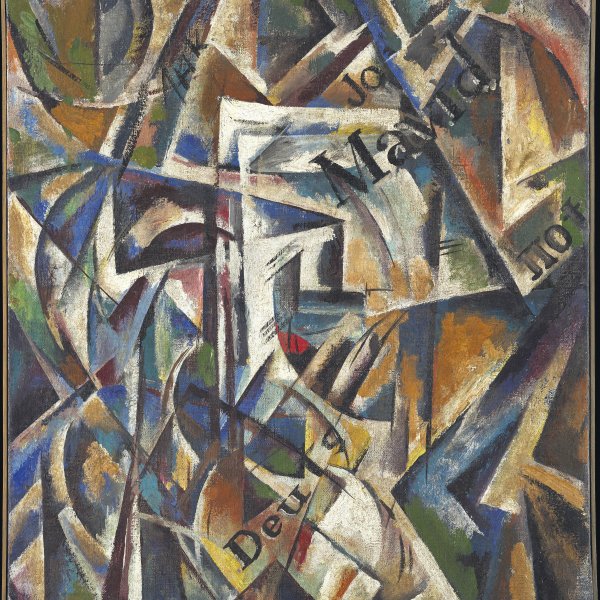Nadeshda Udaltsova
Orel, 1886-Moscow, 1961
The Russian painter Nadeshda Udaltsova was affiliated with Cubism and later Suprematism. She studied at the Moscow School of Painting, Sculpture and Architecture from 1906 to 1909. She later attended the classes of Konstantin Yuon, where she probably met Liubov Popova, with whom she travelled to Paris in 1912. The classes taught by Jean Metzinger and Henri Le Fauconnier at the Académie de La Palette were decisive in steering her work towards Cubism.
After returning to Russia in 1913, Udaltsova began to work in The Tower, Vladimir Tatlin’s Moscow studio. During these years she exhibited in numerous avant-garde exhibitions, such as Jack of Diamonds in 1914 or Tramway V and 0.10. The Last Futurist Exhibition of Paintings in Petrograd in 1915. Her participation in these last two shows heightened her interest in studying movement in her Cubist works.
Like Popova and other artists of the period, at the end of 1916 Udaltsova embraced Kazimir Malevich’s Suprematism and collaborated with him on the project for the magazine Supremus, which was never published. She also began to apply Suprematist designs in her new explorations of textile design. Following the Revolution of 1917, Udaltsova was actively involved in various cultural initiatives, such as the art department of the Proletkult (Proletarian Cultural Organisations). She taught classes, first as Malevich’s assistant and later alone. She lectured on avant-garde art and was a member of the Institute of Artistic Culture (Inkhuk), although she left the organisation in 1921 owing to a disagreement with the Constructive artists, who advocated the end of painting as an artistic practice.
Following a return to figuration in the early 1920s, in a style rooted in her Cubist origins, Udaltsova gradually progressed towards a more descriptive art in which she depicted her travels to the Urals and Armenia.
After returning to Russia in 1913, Udaltsova began to work in The Tower, Vladimir Tatlin’s Moscow studio. During these years she exhibited in numerous avant-garde exhibitions, such as Jack of Diamonds in 1914 or Tramway V and 0.10. The Last Futurist Exhibition of Paintings in Petrograd in 1915. Her participation in these last two shows heightened her interest in studying movement in her Cubist works.
Like Popova and other artists of the period, at the end of 1916 Udaltsova embraced Kazimir Malevich’s Suprematism and collaborated with him on the project for the magazine Supremus, which was never published. She also began to apply Suprematist designs in her new explorations of textile design. Following the Revolution of 1917, Udaltsova was actively involved in various cultural initiatives, such as the art department of the Proletkult (Proletarian Cultural Organisations). She taught classes, first as Malevich’s assistant and later alone. She lectured on avant-garde art and was a member of the Institute of Artistic Culture (Inkhuk), although she left the organisation in 1921 owing to a disagreement with the Constructive artists, who advocated the end of painting as an artistic practice.
Following a return to figuration in the early 1920s, in a style rooted in her Cubist origins, Udaltsova gradually progressed towards a more descriptive art in which she depicted her travels to the Urals and Armenia.





